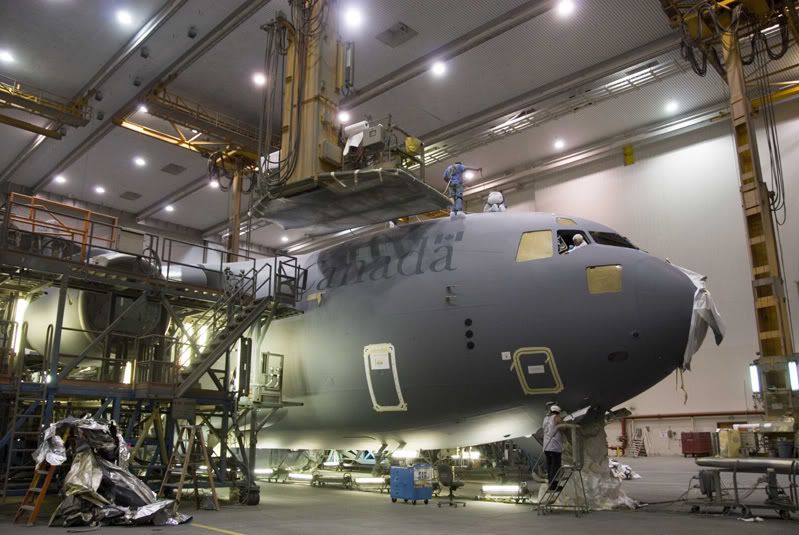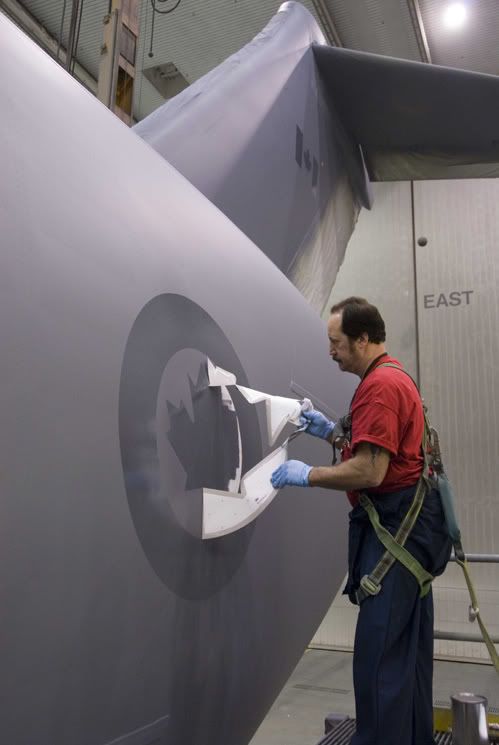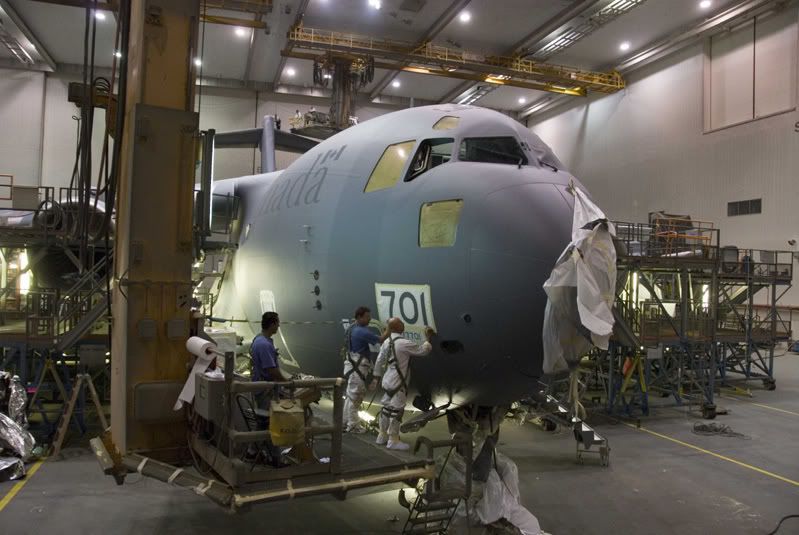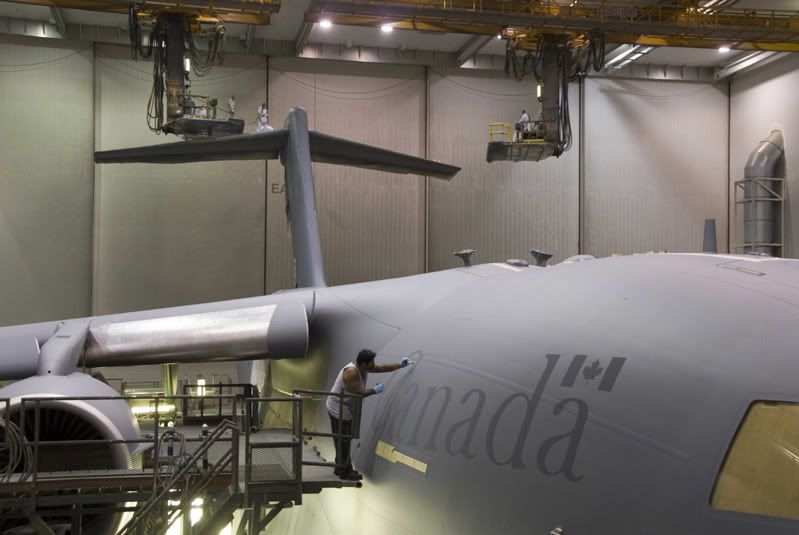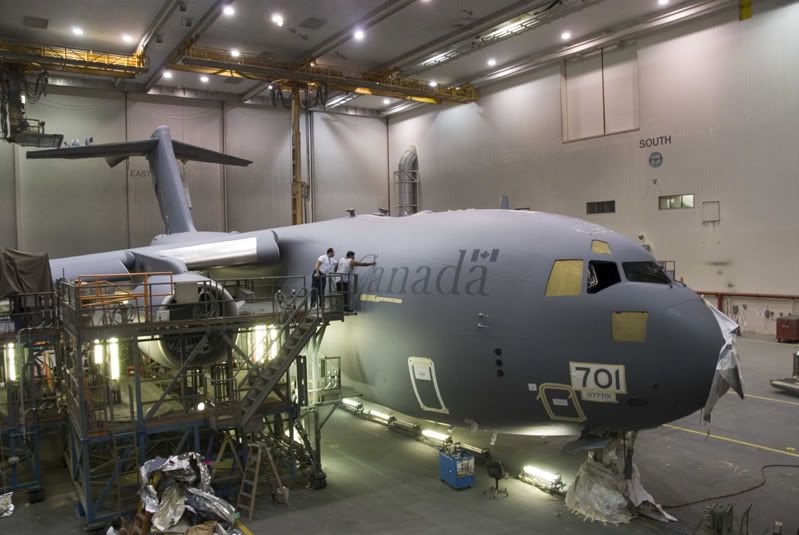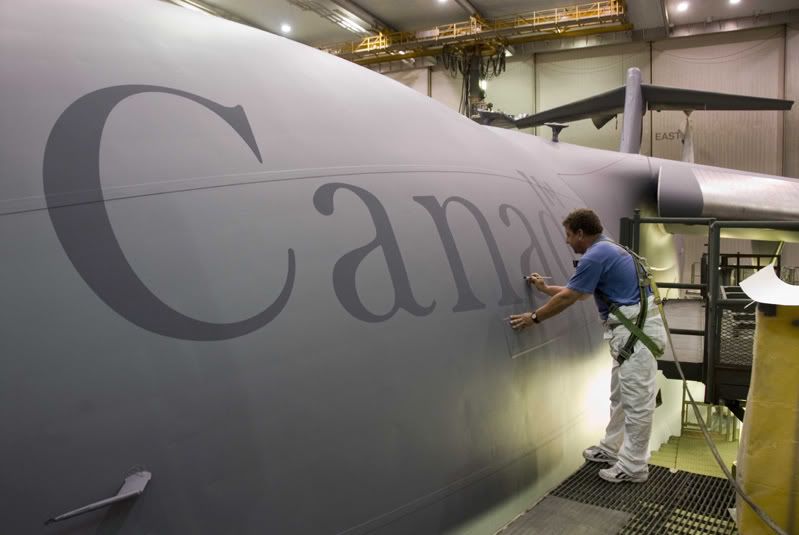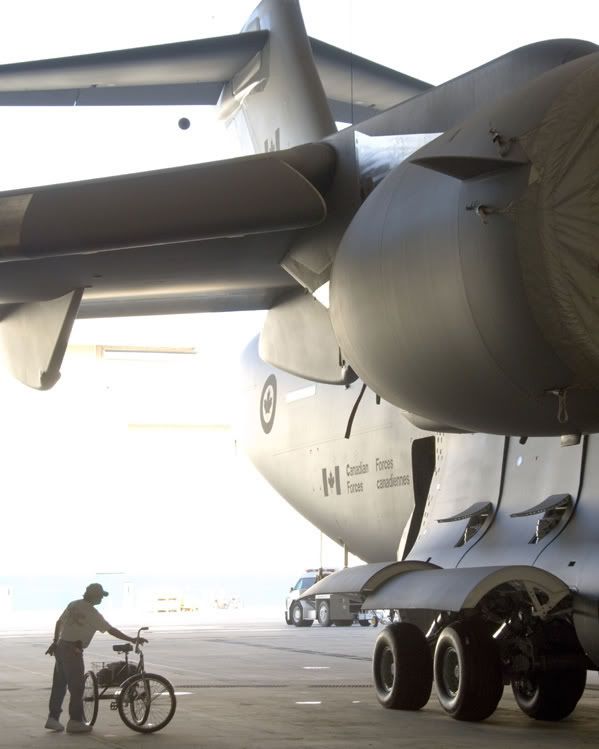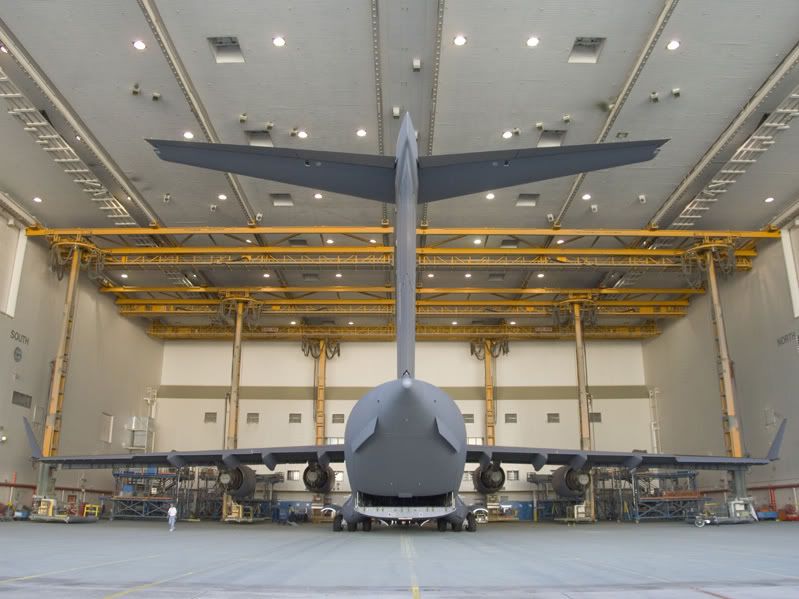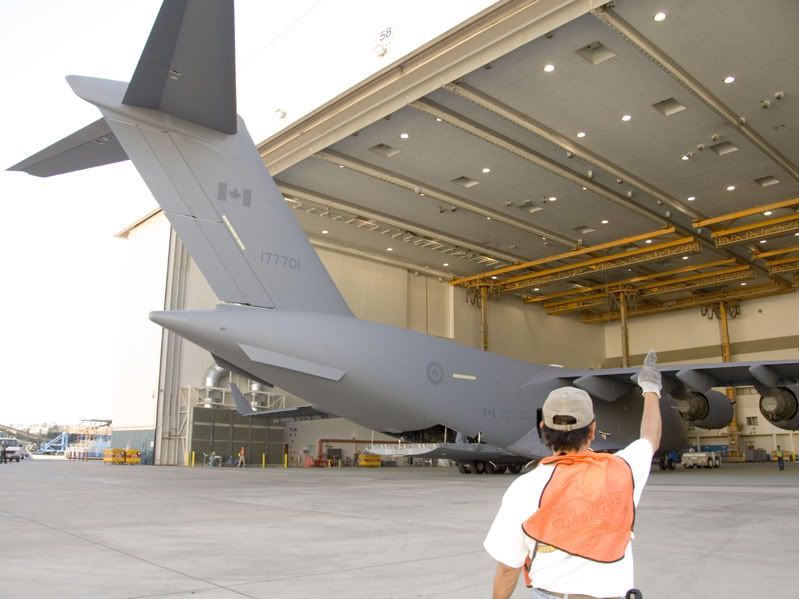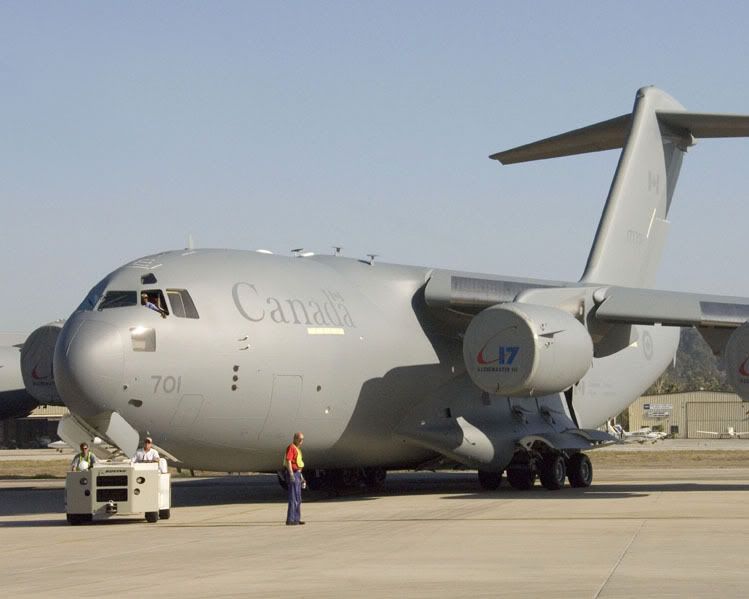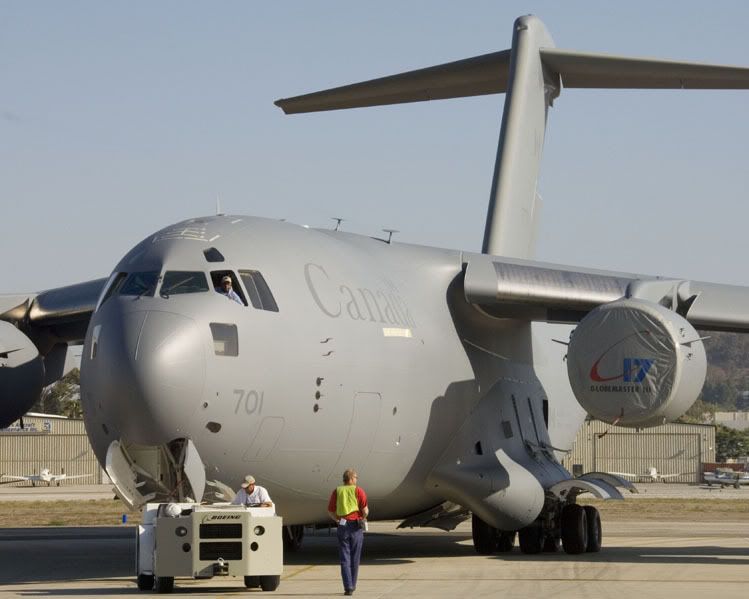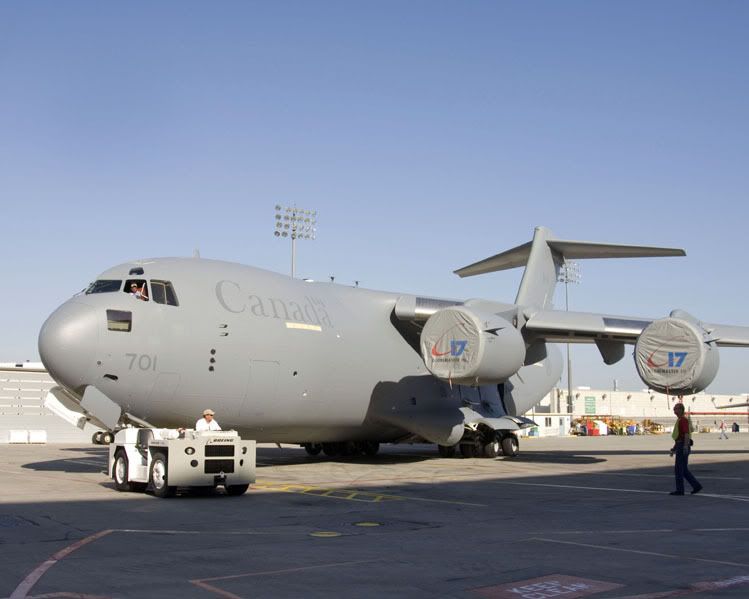Pointblank
Senior Member
Defence minister hails $3.4B cargo plane deal as 'new era' for military
Last Updated: Friday, February 2, 2007 | 5:00 PM ET
CBC News
The federal government announced on Friday a $3.4-billion deal with Boeing to buy four heavy-lift military cargo planes, but questions remained over which provinces will benefit most from lucrative spinoff contracts.
Gen. Rick Hillier, Canada's chief of defence staff, joined Defence Minister Gordon O'Connor, Industry Minister Maxime Bernier and Public Works Minister Michael Fortier at National Defence headquarters for the announcement.
"This marks a beginning of a new era for Canada's Armed Forces," O'Connor said, citing the planes' flexibility for a range of missions.
"We will be faster and better in reaching out" to communities around the world in need of emergency aid by rapidly transporting Canada's Disaster Assistance Response Team, as well as better replenishing soldiers in the field, he added.
The first of the four planes will be delivered by the end of August, O'Connor said.
In June, the government set aside the funds for Boeing's C-17 Globemaster III transport planes, which can lift 76 tonnes and are capable of carrying any piece of equipment in Canada's military inventory, including tanks and armoured vehicles.
A beaming Hillier said the C-17 was a perfect fit for Canada's military needs.
"It's essential," he said. "It gives us a capability to move around the world that we have never had in our history."
The deal also brings $869-million worth of investments by Boeing in Canada's aerospace and defence industry, Bernier said.
While the planes will be built in the U.S., the federal deal hinges on Boeing pledging to spend an amount equal to the purchase price on projects in Canada. The arrangement pitted Manitoba and Quebec against each other to obtain a large share of the benefits.
Provinces sparring for spinoffs
The deal was rumoured to have been delayed by almost two months over disputes involving the spinoff subcontracts, known as industrial regional benefits, or IRBs.
Quebec lobbied fiercely to get a majority of the industrial benefits the province argued it deserved, but is expected to get only about 30 per cent of the value of the contract in spinoffs.
Bernier would not give the percentage or which projects would go to Quebec versus aerospace companies in Western and Atlantic Canada, saying only that Boeing will announce individual contracts with Canadian suppliers in the coming weeks.
"This will benefit Canadian companies coast to coast," he said.
The government's lack of detail on the spinoff projects drew immediate rebuke from Quebec, which is home to roughly 60 per cent of the country's aerospace industry.
"It seems obvious that Quebec should benefit in a substantial way," Quebec Premier Jean Charest told Radio-Canada Friday.
"They [the government] have the responsibility to make sure that it has an impact on jobs, [and] on the economy in Quebec," Parti Québécois finance critic Francois Legault told CBC News.
But Manitoba Premier Gary Doer said Friday he already knows there is good news for his province in the deal.
"What does that mean for Manitoba? It will mean that Boeing, over the next period of time, will go from 1,200 good-paying jobs at the Boeing plant here in Winnipeg, to 1,400 good-paying jobs in this province," he said.
"It will last for a long period of time because of the length of the contract and the length of the offsets. So we're very pleased about that."
The Conservatives promised in the last election campaign that they would buy the unique aircraft for the Canadian military so it could transport its own heavy equipment around the world.
The Liberals said the decision to buy the planes was made without a full tendering process, and Canada's Armed Forces could continue to lease or borrow transport planes from allies such as the United States or other NATO countries.
News Release
Canada's New Government Delivers for Canadian Forces: Awards Contract for Strategic Airlift
Government of Canada / Gouvernement du Canada - February 2, 2007
OTTAWA — The Honourable Gordon O'Connor, Minister of National Defence, together with the Honourable Michael M. Fortier, Minister of Public Works, and the Honourable Maxime Bernier, Minister of Industry today announced The Boeing Company has been awarded the contract to supply strategic airlift aircraft to the Canadian Forces.
The agreement fulfills a commitment by Canada's New Government to pursue defence procurement initiatives that equip and strengthen our military and provide economic benefits across the country.
“Canada's New Government is dedicated to meeting the urgent needs of our Canadian Forces,” said Minister O'Connor. “Today's announcement is the first step to ensure that our dedicated men and women in uniform have the equipment they need.”
“Our government has delivered on our commitment to fair and open procurement and to our Canadian Forces,” added Minister Fortier. “While ensuring a win for the Canadian Forces, we have done that in a way that ensures Canadian taxpayers get the best value for their money.”
“We have worked hard to deliver real benefits to Canadian industry as a result of our defence procurements,” said Minister Bernier. “This agreement represents tremendous opportunity for Canadian companies to compete and stay at the forefront of the global industry.”
Canada's New Government is purchasing four strategic lift aircraft to provide rapid, reliable and flexible transport of large amounts of passengers and equipment over long distances in response to domestic emergencies and international crises. This strategic lift capability will be a “Canada First” asset – to be used on our own terms and at times of our own choosing. Canada will no longer have to join the international queue, negotiating against other countries for scarce commercial options, to fulfill its responsibilities. At home, Canada will be better able to protect Canadians from coast to coast to coast, including domestic response capabilities and reaching out to all our communities, including in the Arctic.
Strategic airlift will also enhance Canada's ability to provide humanitarian assistance in any part of the world, as well as increase our disaster assistance response capability. It will ensure that our Canadian Forces in Afghanistan receive the supplies and equipment they need to get the job done.
“These new aircraft will have an immediate impact on how we can support operations,” said General Rick Hillier, Chief of the Defence Staff. “They will increase our capacity to cover vast distances with bigger loads, fewer crews and less stopovers. In addition, they will alleviate some of the workload carried out by our aging Herc fleet and that which we paid to lease.”
The acquisition of these aircraft has been conducted through a competitive process known as an Advance Contract Award Notice (ACAN), which identifies the Government's intention to contract with a specific supplier and also gives all potential suppliers the opportunity to demonstrate that they also can meet the Canadian Forces' mandatory capabilities for strategic airlift.
Under Canada's procurement policy, contractors must undertake quality economic activities in advanced technology sectors of the Canadian economy. These activities must be an amount equal to 100% of the contract value. Boeing has already identified more than $570 Million in contracts and in late-stage negotiations with Canadian companies from coast to coast, and the company will announce details of these contracts in the coming weeks.
Canada's New Government is working to ensure that these procurements deliver maximum, high-quality economic benefits to Canada, and that Canadian firms are well positioned to play significant roles as these projects progress. The estimated total cost for this strategic lift aircraft project acquisition is $1.8 billion, plus an estimated contract value of $1.6 billion for 20 years of in-service support.
After following the proper procurement process, future contracts will also be awarded for tactical airlift, medium-to-heavy-lift helicopters, joint support ships and medium-sized logistics trucks. For each of these contracts, companies will be required to invest in the Canadian economy dollar for dollar what they receive from procurement contracts, resulting in approximately $13 Billion in opportunities for Canada's aerospace and defence industry.
- 30 -
For more information, please contact:
National Defence
Office of Minister O'Connor
Isabelle Bouchard
Director of Communications
(613) 996-3100
Public Works and Government Services Canada
Office of Minister Fortier
Jean-Luc Benoît
Director of Communications
(819) 997-5421
Industry Canada
Office of Minister Bernier
Isabelle Fontaine
Director of Communications
(613) 995-9001
Good for Canada. They need heavy lift capabilities for a while and leasing it isn't the most ideal option every time. Now do something about those 40+ year old Hercs!

